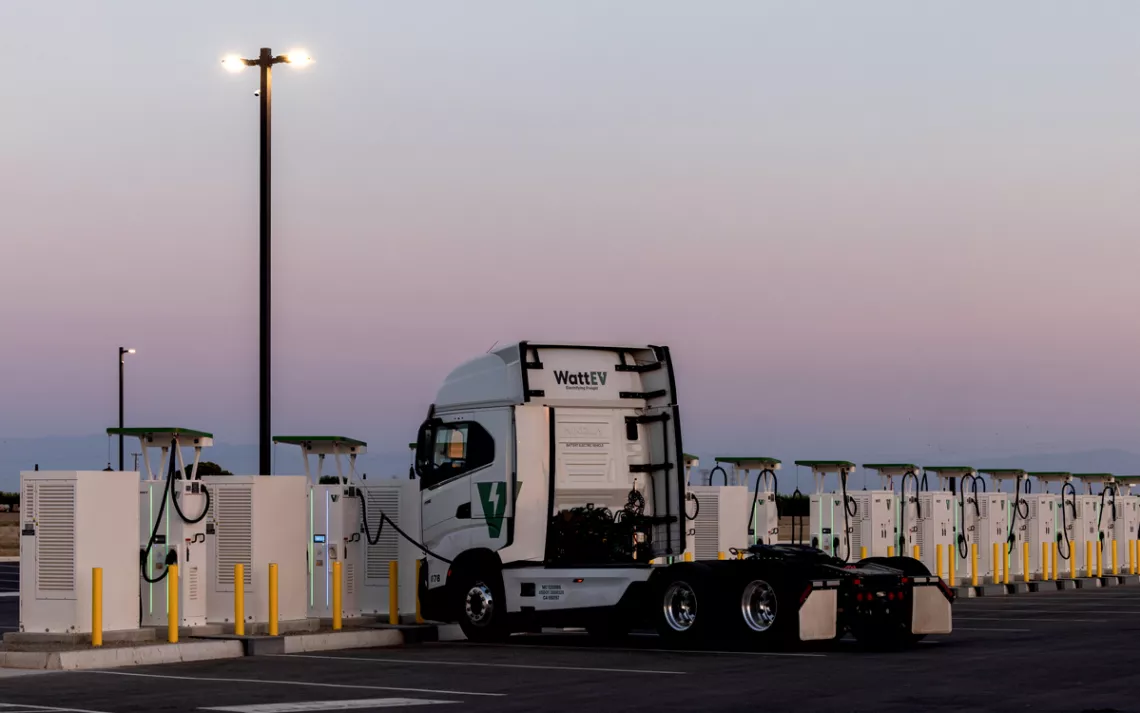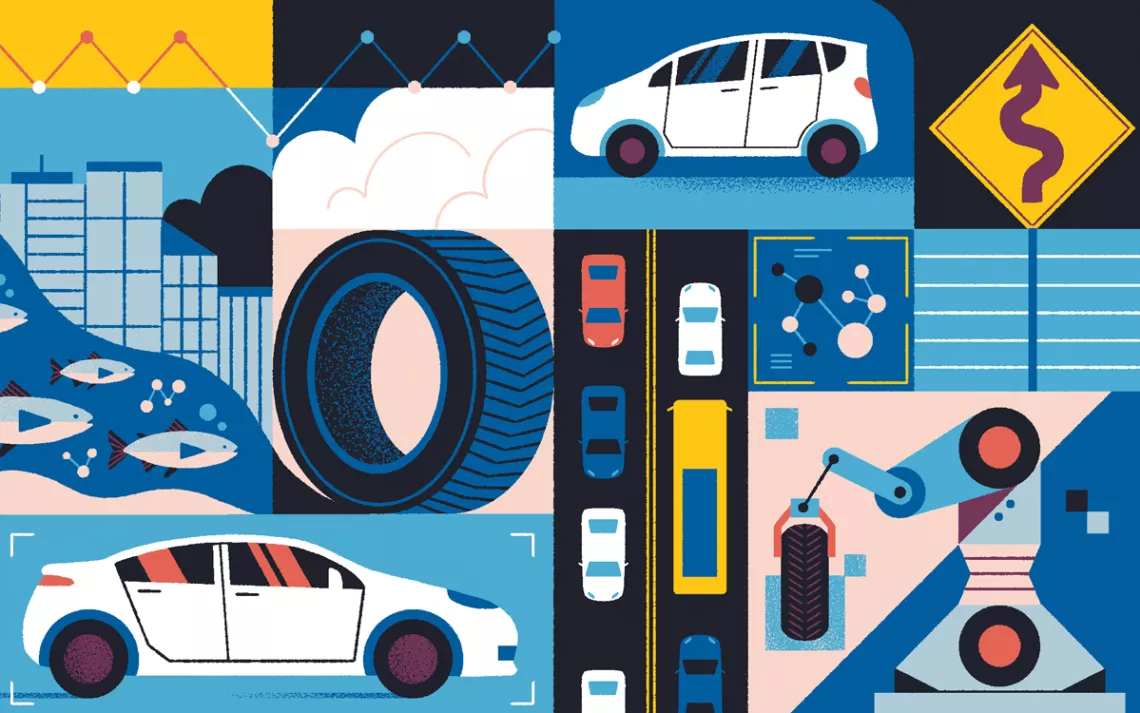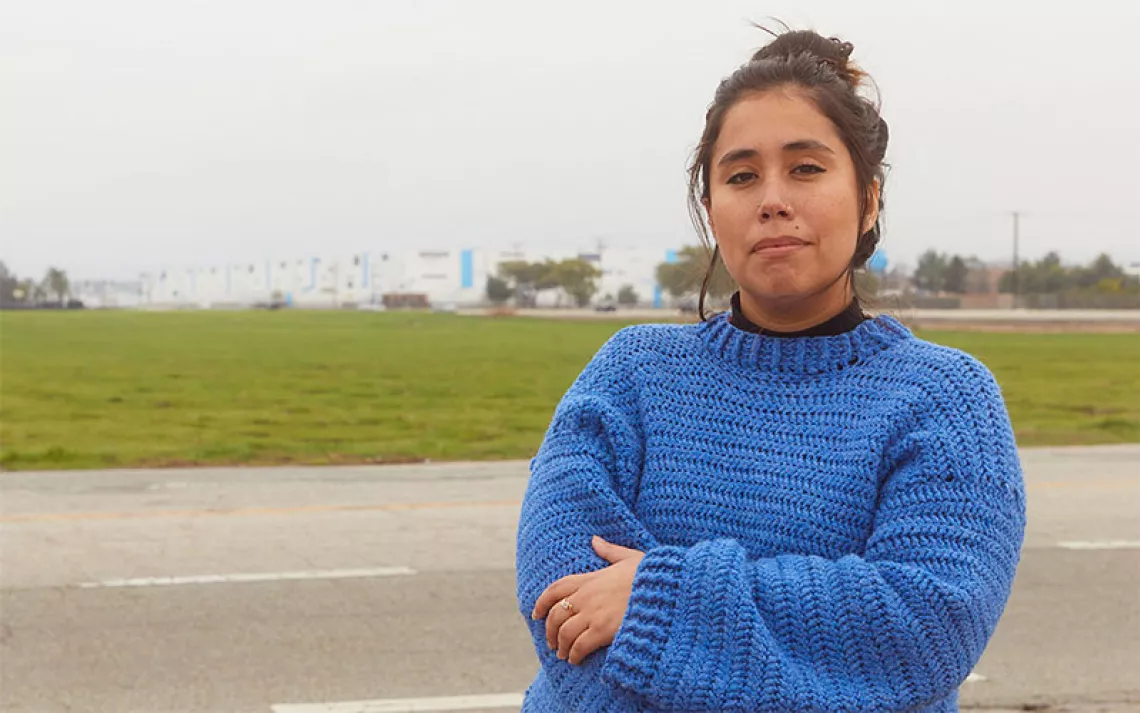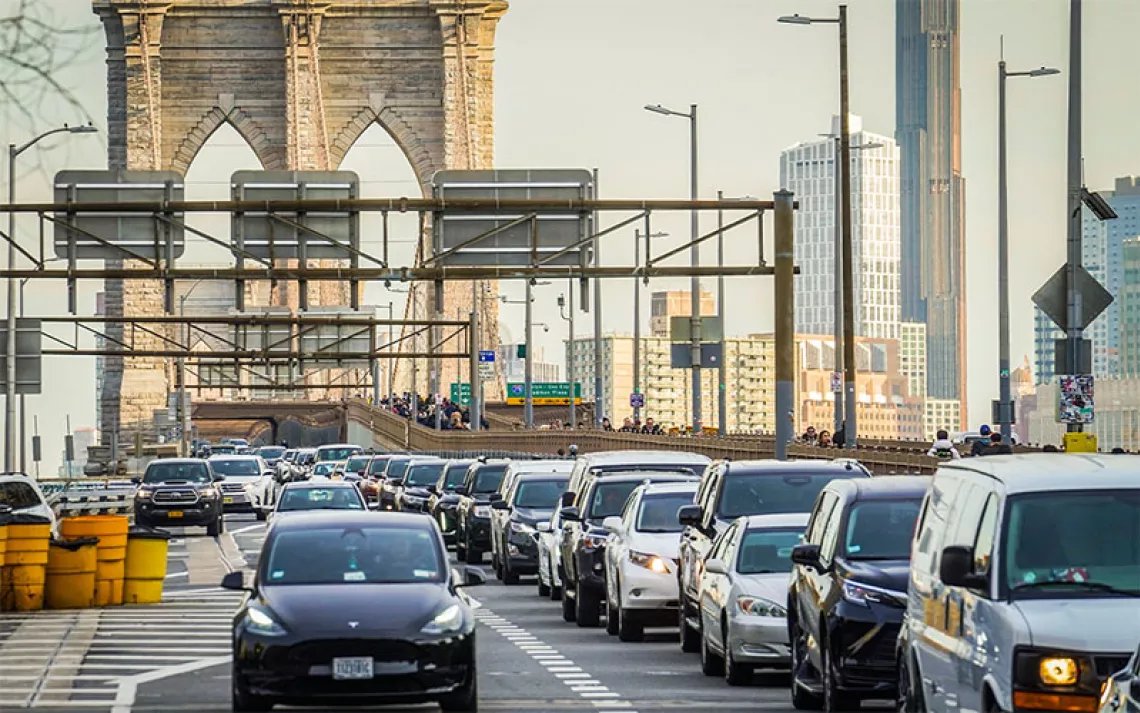Two New Lawsuits Keep Hope Alive for New York City’s Congestion Pricing
Environmental groups, including the Sierra Club, are suing Governor Kathy Hochul for blocking it
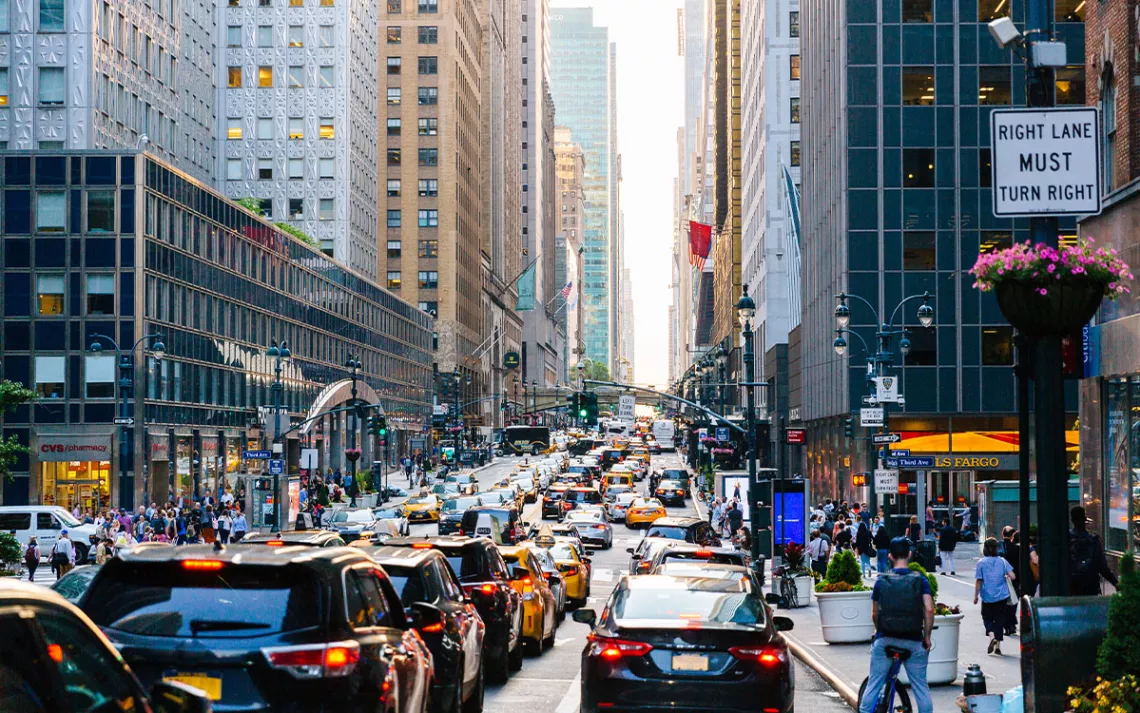
Traffic jam on 42nd Street in Manhattan. | Photo by Alexander Spatari/Getty Images
June 30, 2024, could’ve been a milestone date in the annals of American city planning. That was the date that New York City was supposed to launch the first-ever congestion pricing plan in the United States, cementing itself as one of the country’s climate-action leaders.
It didn’t happen. Instead, in early June, Governor Kathy Hochul put the plan on pause indefinitely, citing New York City’s ongoing economic recovery from the pandemic. Now, several environmental groups and the City Club of New York have filed two new lawsuits against Governor Hochul.
One case, filed by the City Club of New York, focuses on the congestion pricing law itself; it asserts that the governor’s resistance to implementing an agreed-upon piece of legislation is unlawful. The other, filed by the Riders Alliance, Sierra Club and New York City Environmental Justice Alliance, alleges that blocking congestion pricing goes against the rights to clean air and water promised in the New York State Constitution.
“The governor basically just took it away and said, ‘We’re not going to do that,’” said Dror Ladin, a lawyer with Earthjustice’s northeast regional office and lead attorney on the environmental lawsuit. “That seems to be a pretty clear violation.”
As established by the law that passed the New York Legislature, congestion pricing in New York City would require vehicles to pay a toll to pass through heavily trafficked parts of the city. When the streets are quiet, the fare would be low—$3.75 for cars and $1.75 for motorcycles. During busier parts of the day, the prices would raise to $15 and $7.50, respectively. At its core, the system is designed to discourage gridlock by operationalizing the old adage, “time is money.”
Commuters already pay a hefty price for traffic congestion—their time. In 2023, New York City commuters spent an average of 101 hours per person in traffic. Researchers estimate that most workers lose between $15 and $18 for every hour they sit in heavily congested streets. Spread across the city’s millions of daily drivers, that’s the equivalent of billions of dollars wasted each year.
Congestion pricing helps remedy this in two ways. First, it reduces the overall volume of traffic. Second, it reinvests that lost money into public systems. “If you take somebody’s time, you never get it back,” said Peter Furth, a civil and environmental engineer at Northeastern University. “But if you take somebody’s money, the money doesn’t just disappear down a black hole. You can now do something useful for society with it.”
In the case of New York City’s congestion pricing plan, that would manifest as sweeping upgrades to public transit infrastructure.
“Every day, over 3.5 million people rely on the New York City public transit system,” New York City Comptroller Brad Lander told Sierra. The network of subway and bus lines are essential for daily business and life in the country’s biggest city. But the city’s subways currently operate on signal systems that are decades—and in a few cases, centuries—old. The aging infrastructure can lead to delays and no shortage of commuter frustration. Funds from congestion pricing would go a long way towards upgrading those signals.
The money would also go toward improvements like electrifying local busses, cleaning up food transportation, and building a whole new subway line connecting Brooklyn and Queens. And it would help make the subways more accessible to disabled people, many of whom can only currently access about a third of the city’s 472 stations.
But until the congestion pricing plan goes into effect, those upgrades won’t happen. “Every single one of those projects depends on the $15 billion that will come from congestion pricing,” Lander said.
In addition to funding infrastructure reforms, congestion pricing could have significant environmental and health impacts. Fewer cars on the road would mean less planet-heating carbon dioxide spewed into the atmosphere. It could also mean residents will breathe fewer particulates, sulfur compounds and nitrous oxides from tailpipes and tire dust.
“Traffic is the main source of air pollution in many cities,” said Allison Patton, a researcher at the Health Effects Institute in Boston. “And there’s strong evidence that traffic-related air pollution is associated higher risk of death from heart disease or from lung cancer.”
Historically, New York City has ranked among the most air polluted cities in the country. An event known as the 1966 New York City Smog killed 168 residents when a toxic miasma of sulfur dioxide and carbon monoxide wrapped around the city for three days. This episode helped prompt President Lyndon B. Johnson to sign the federal Air Quality Act into law a year later.

Make every day an Earth Day
Get articles like this one sent directly to your inbox.
With this action you affirm you want to receive Sierra Club communications and may vote on policy designated by the Sierra Club Board.
NYC has been making concerted efforts toward environmental protection ever since. Most recently, New York State passed the Climate Leadership and Community Protection Act, a law designed to essentially guarantee New Yorkers’ rights to clean air and water. It also aims to reduce the city’s greenhouse gas emissions by 85 percent by 2050. But advocates say the goals outlined in this new legislation will be next to impossible to achieve without congestion pricing.
“Governor Hochul’s decision to block congestion pricing is totally inconsistent with the Climate Leadership and Community Protection Act,” said Ladin of Earthjustice. “It specifically gets us further away from our emissions goals.”
Governor Hochul’s office did not respond to requests for comment.
It’s hard to say for sure exactly how much the city’s congestion pricing plan would curb negative health outcomes and CO2 emissions. The city has never implemented a traffic reduction plan on this scale before—and in fact, if the congestion pricing plan goes into effect, it will be the first such program in the United States. But during the four years New York’s congestion pricing was being drafted, the Metro Transit Authority (MTA) researched and wrote a painstaking 958-page assessment of the plan’s projected environmental benefits. Earlier this year, congestion pricing opponents filed three suits alleging that the tolls would actually exacerbate air pollution in certain areas. A judge dismissed all three cases after reviewing MTA’s work.
Recent data have also shown that a similar program in London reduced nitrogen oxide pollution by up to 13 percent and road particulates by up to 20 percent after just six months. And congestion pricing in Stockholm, Sweden, has been linked to plummeting rates of asthma in children.
For the groups involved in the current lawsuits, the battle over congestion pricing is just heating up. However, its proponents haven’t given up on the vision of a cleaner, less traffic-clogged city.
“It helps when people face the true cost of driving,” Furth said. And at the end of the day, “nobody likes a choked road.”
 The Magazine of The Sierra Club
The Magazine of The Sierra Club
